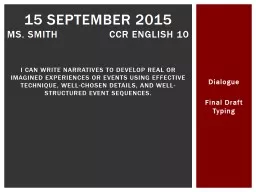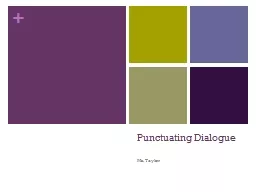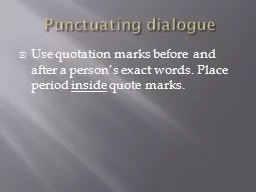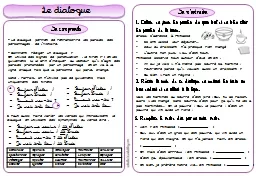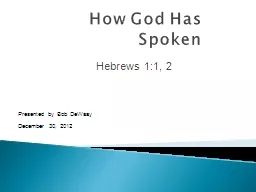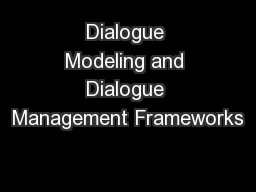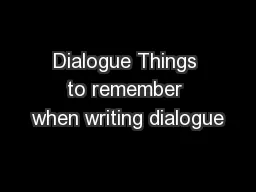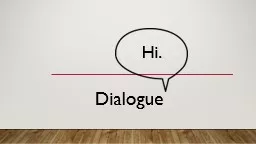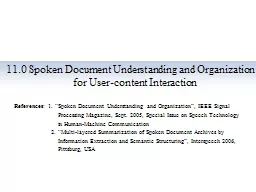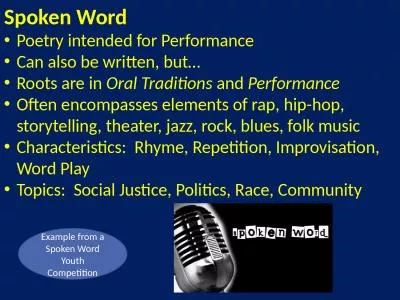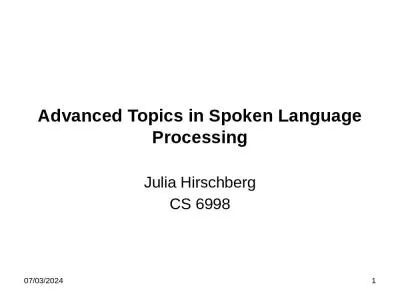PPT-Spoken Dialogue
Author : karlyn-bohler | Published Date : 2016-07-18
Systems Introduction Svetlana Stoyanchev Columbia University 01262014 Instructor Svetlana Stoyanchev Contact Info sstoyanchevcolumbiaedu Skype svetastenchikova
Presentation Embed Code
Download Presentation
Download Presentation The PPT/PDF document "Spoken Dialogue" is the property of its rightful owner. Permission is granted to download and print the materials on this website for personal, non-commercial use only, and to display it on your personal computer provided you do not modify the materials and that you retain all copyright notices contained in the materials. By downloading content from our website, you accept the terms of this agreement.
Spoken Dialogue: Transcript
Download Rules Of Document
"Spoken Dialogue"The content belongs to its owner. You may download and print it for personal use, without modification, and keep all copyright notices. By downloading, you agree to these terms.
Related Documents


